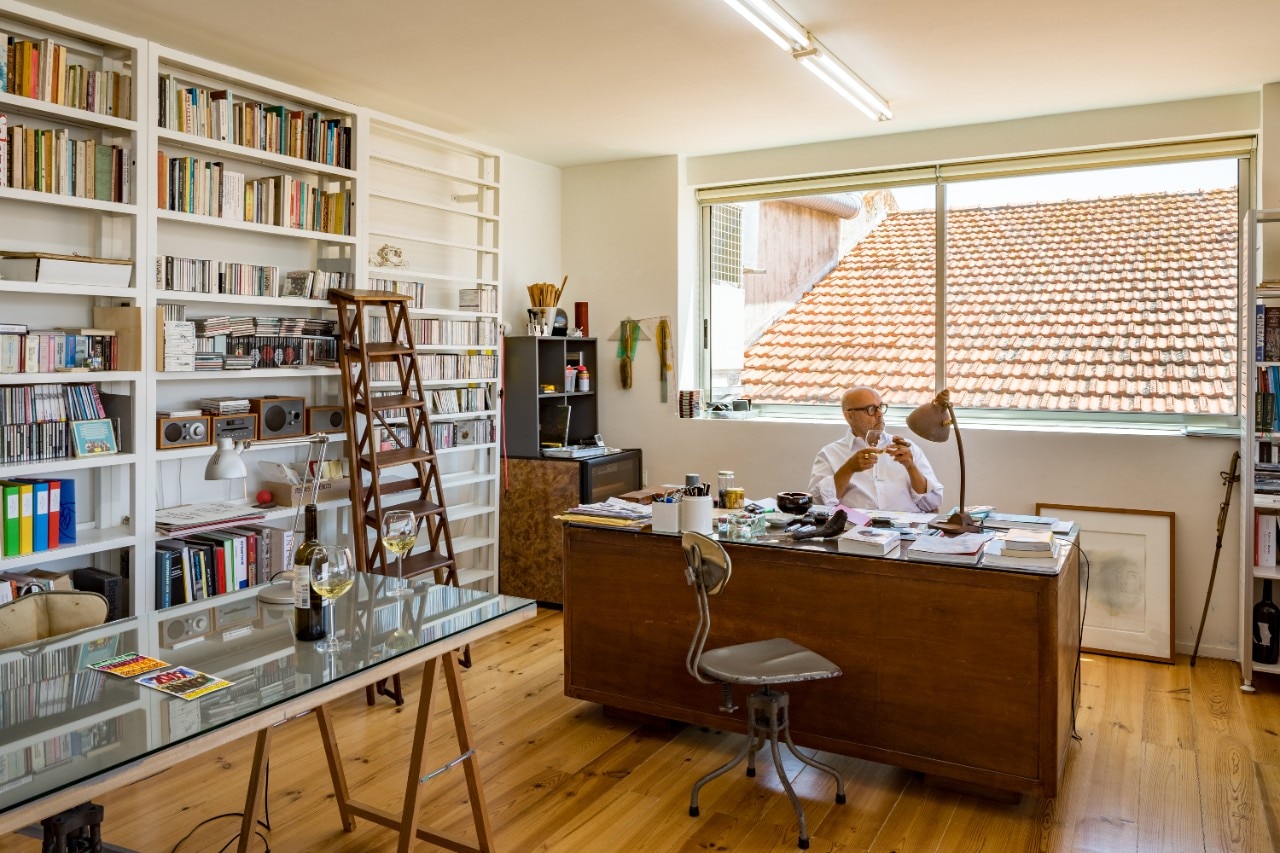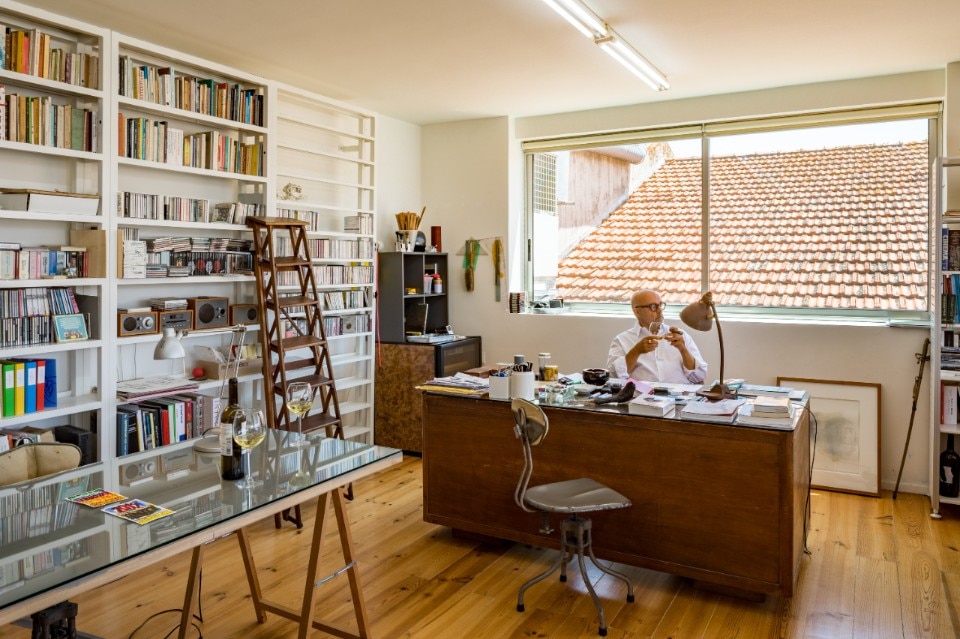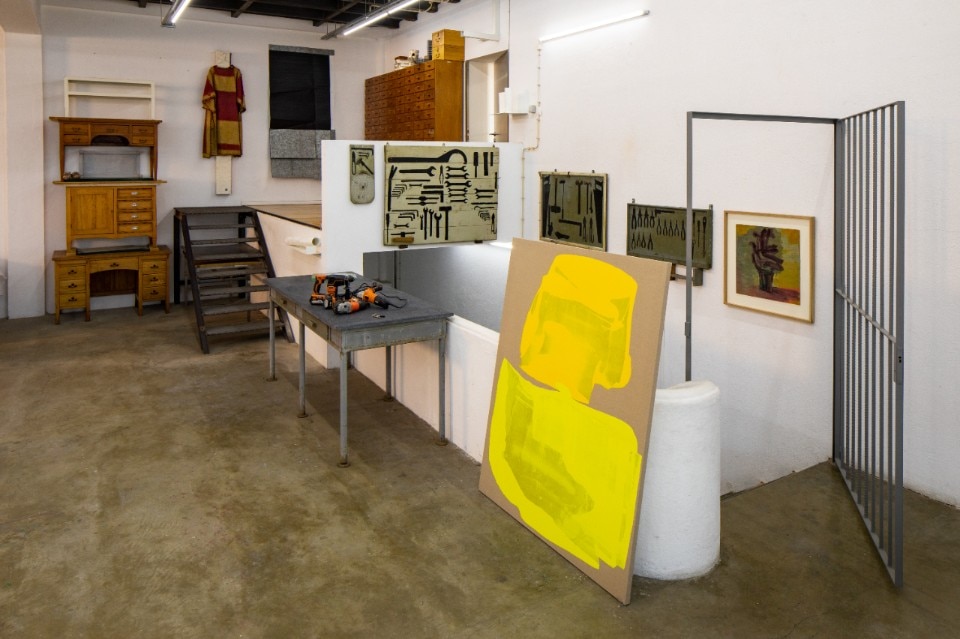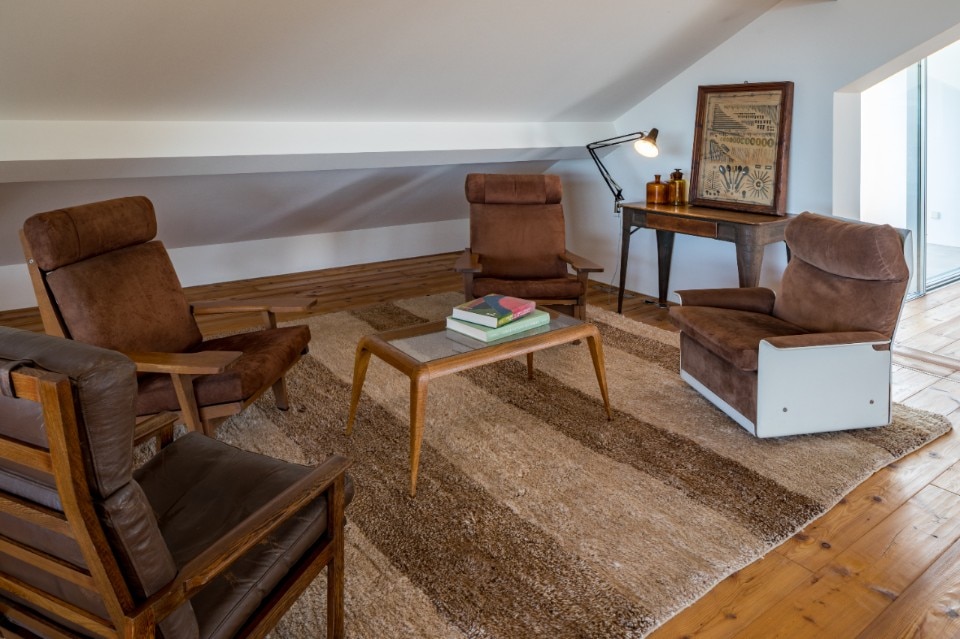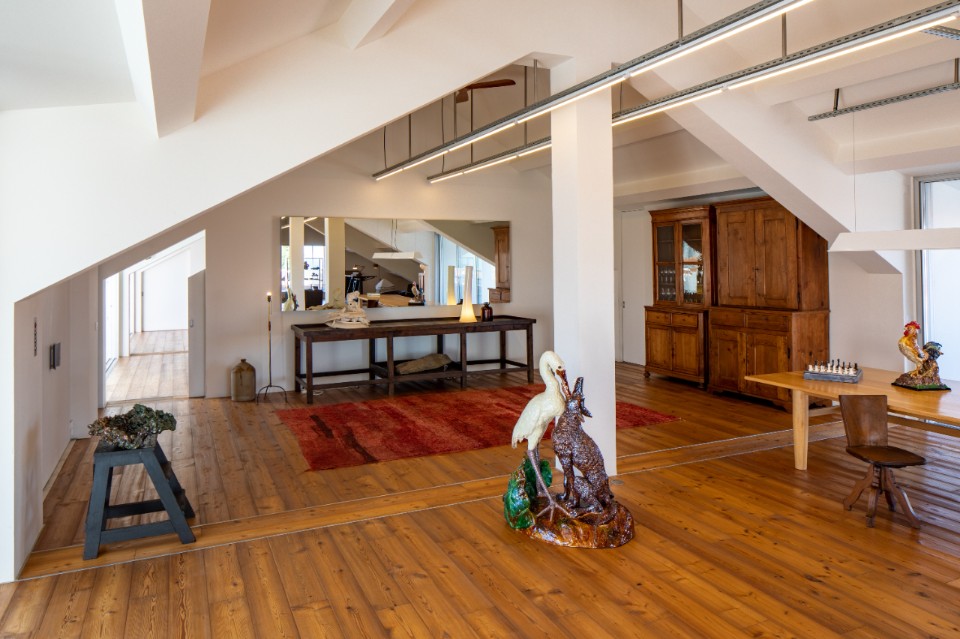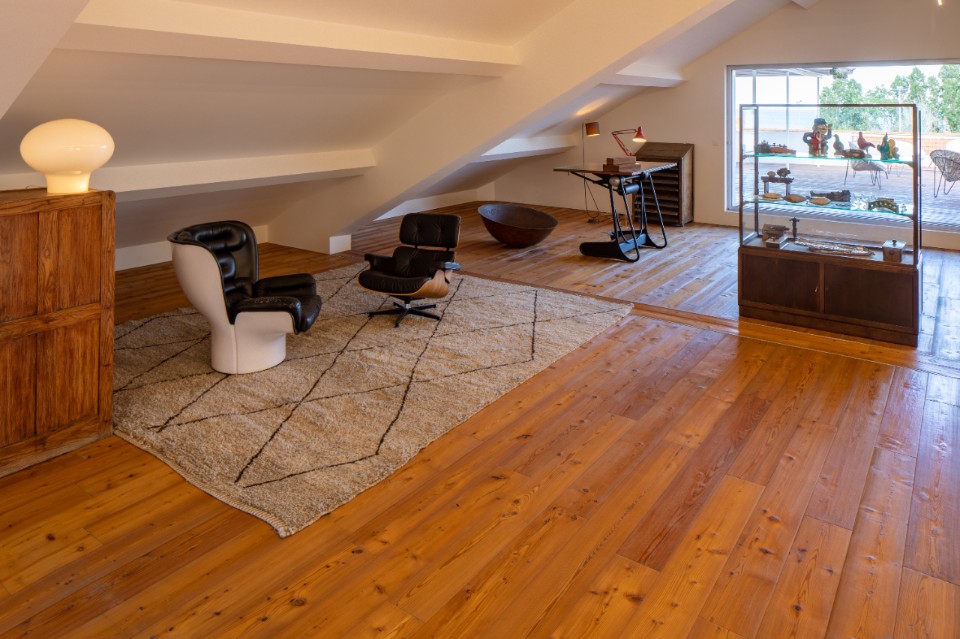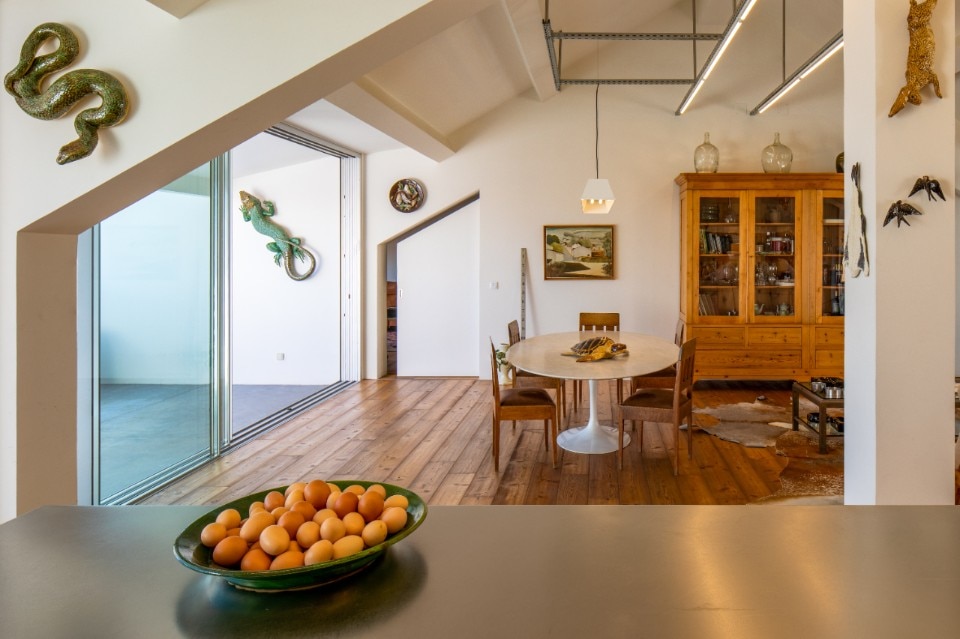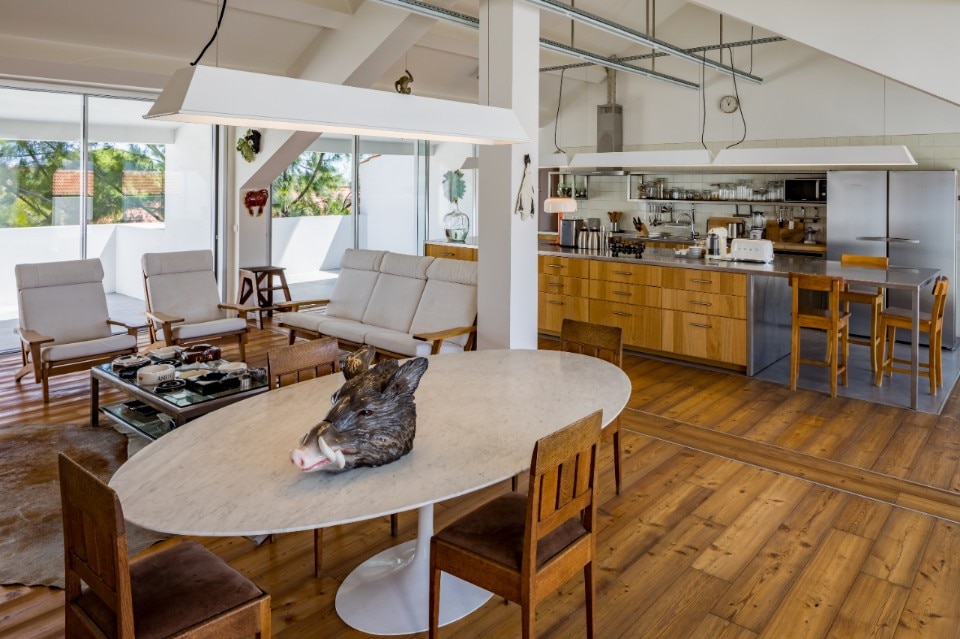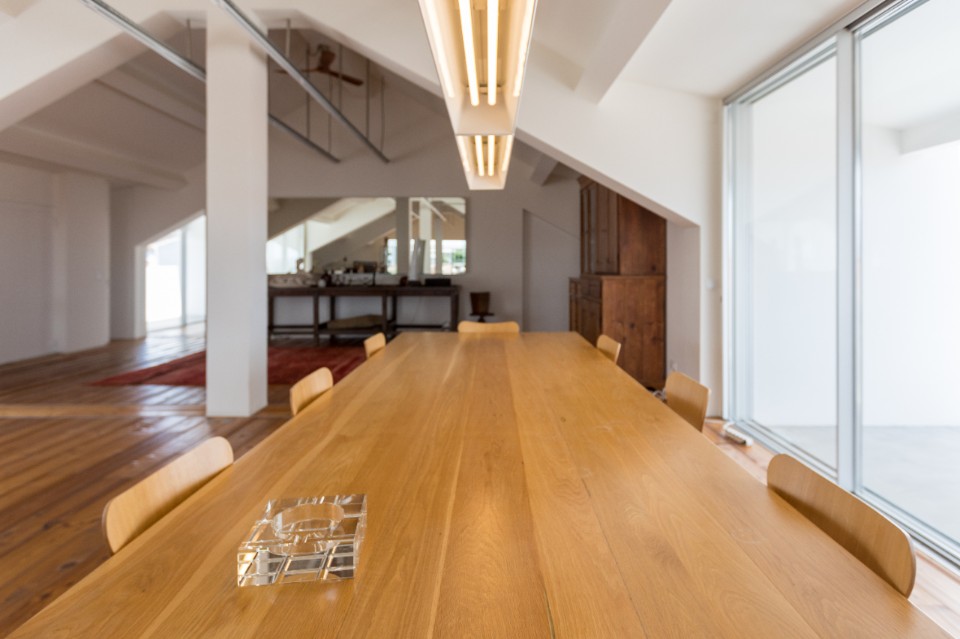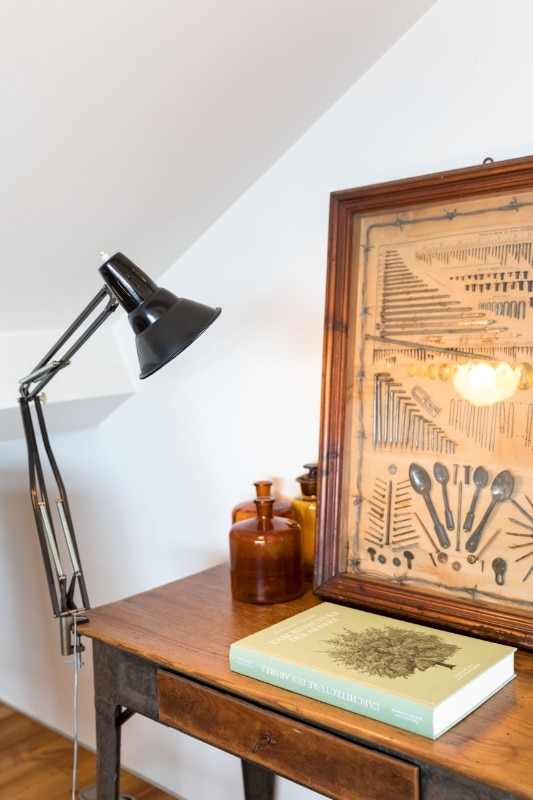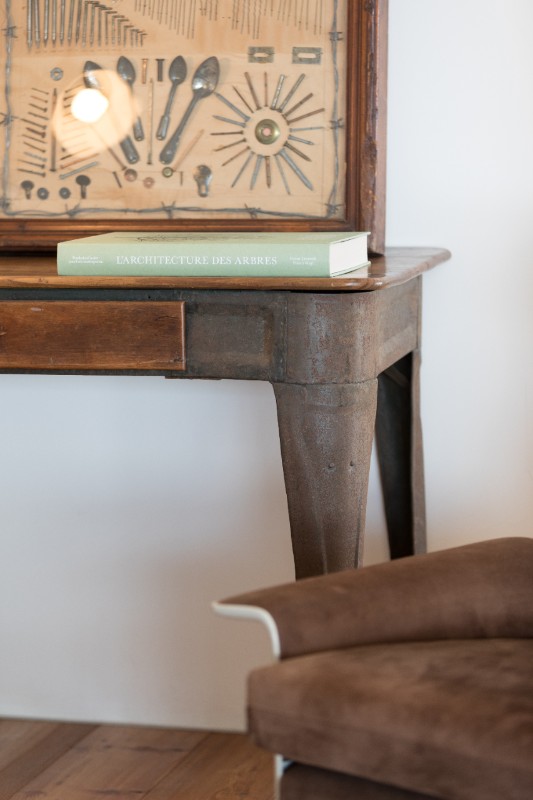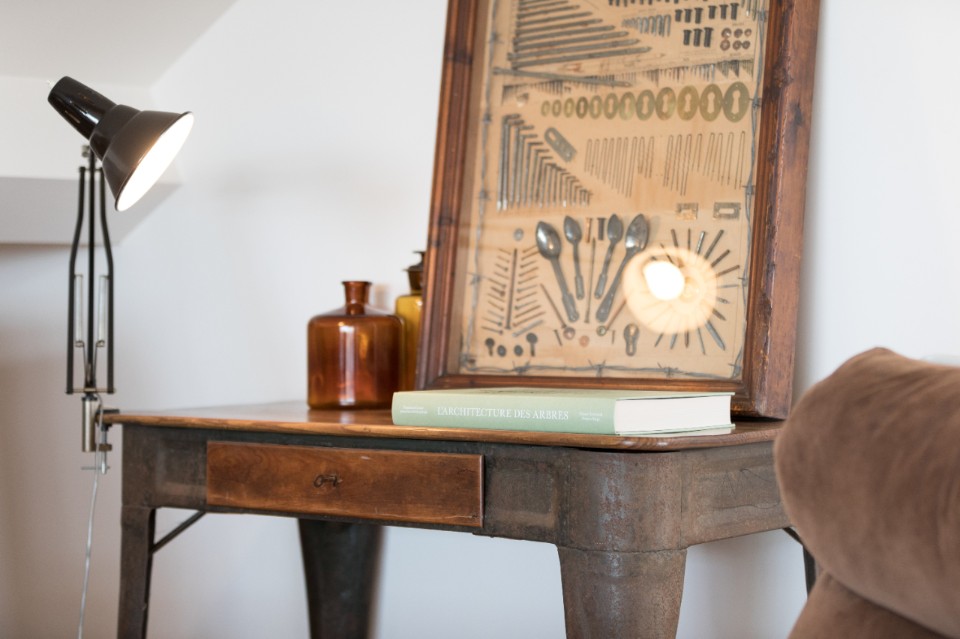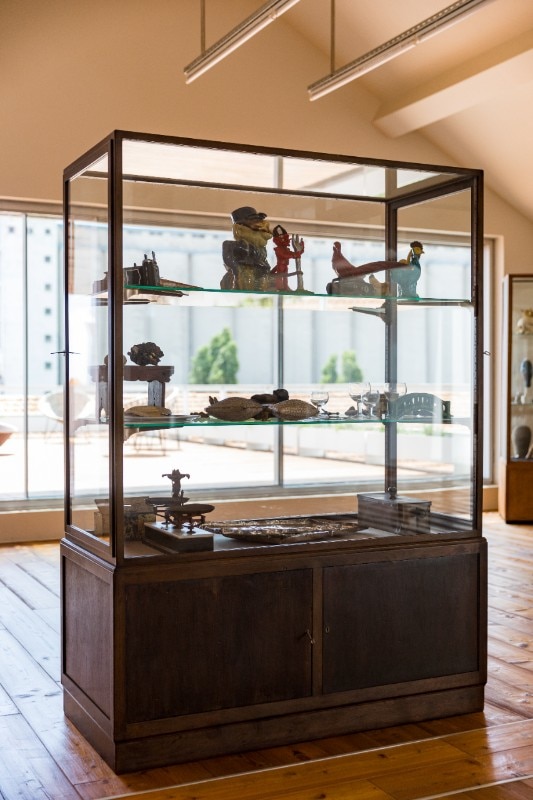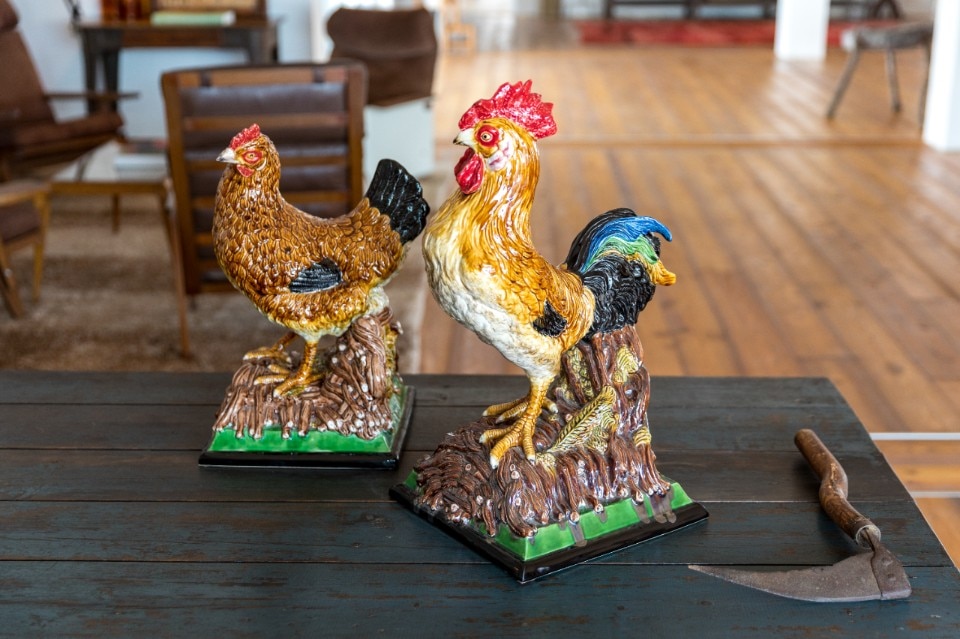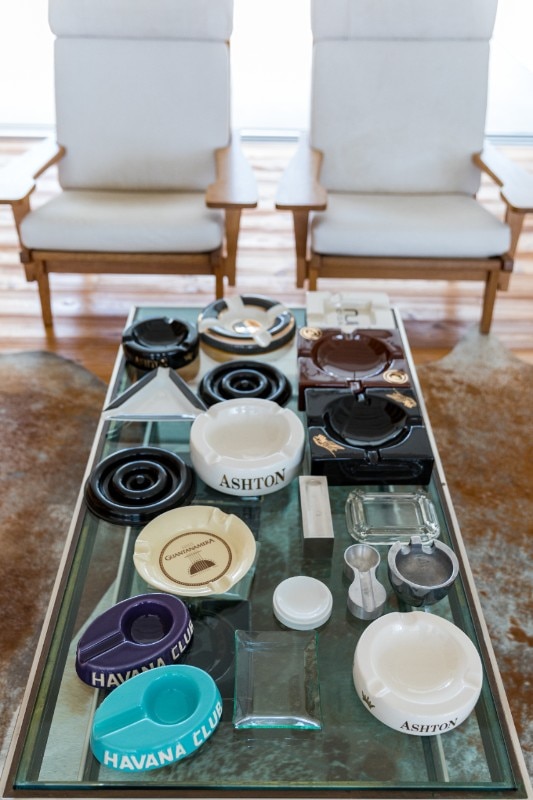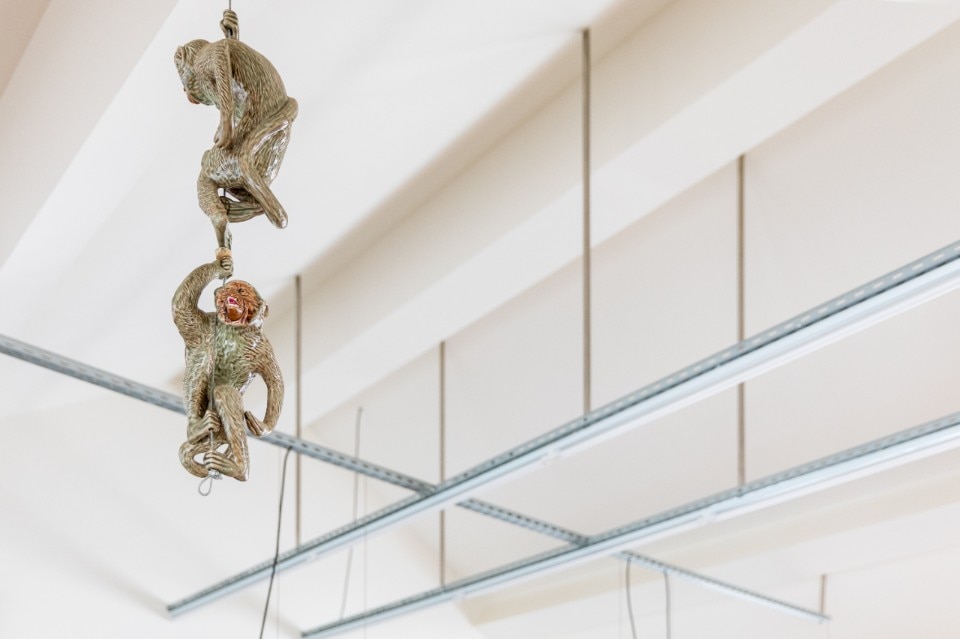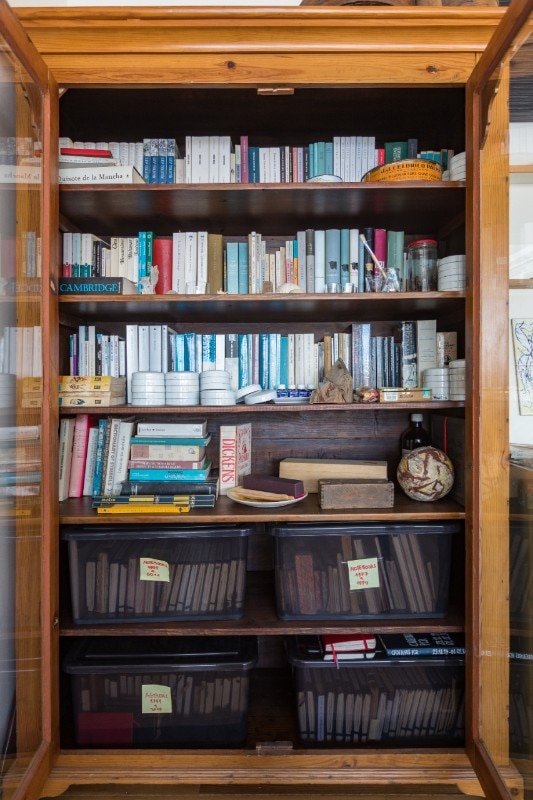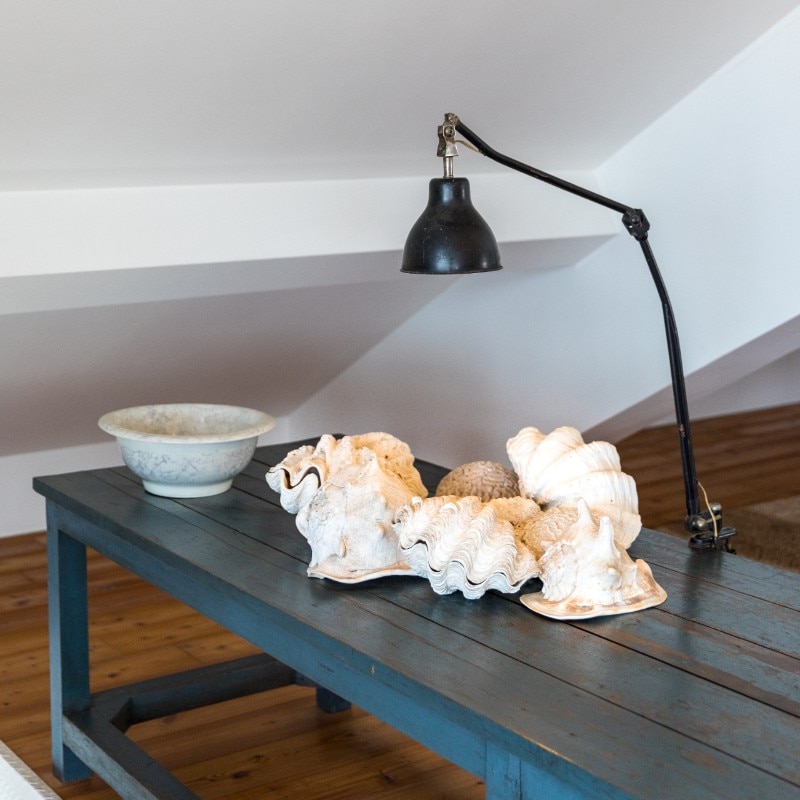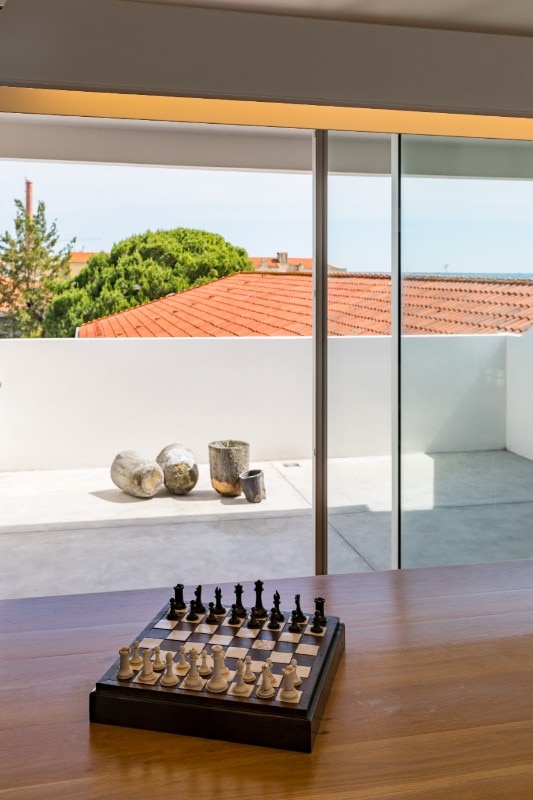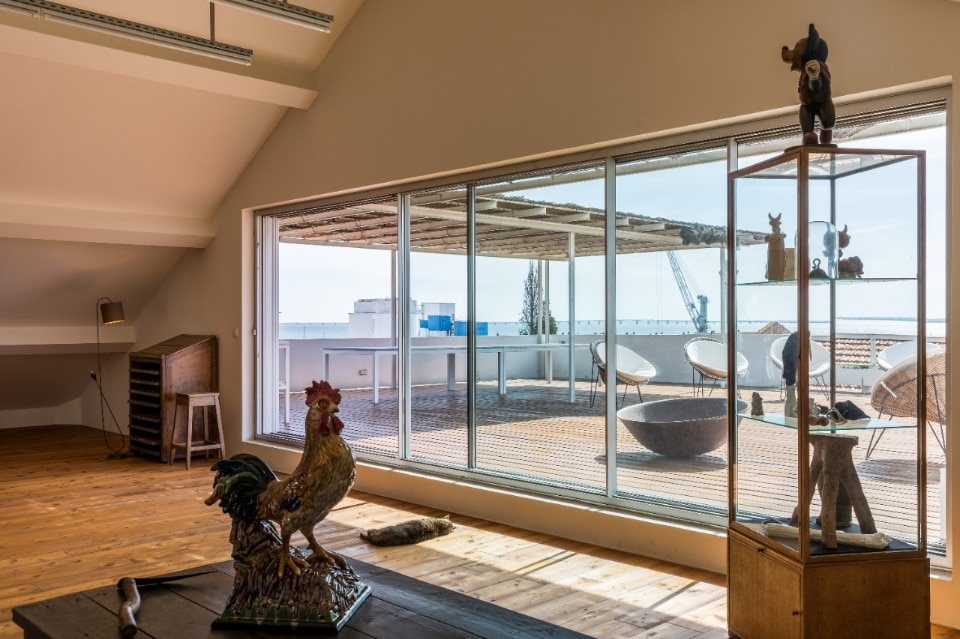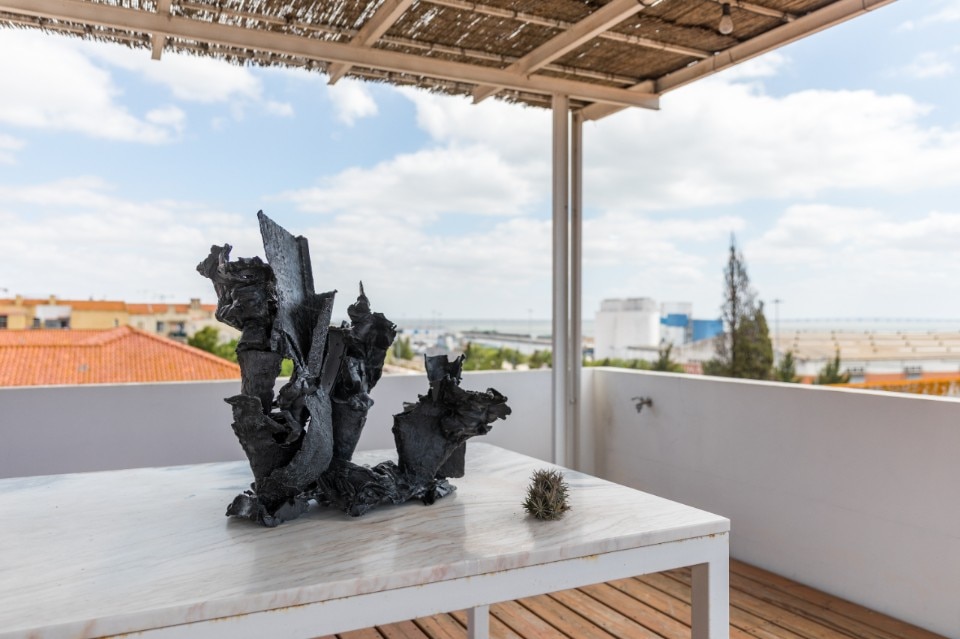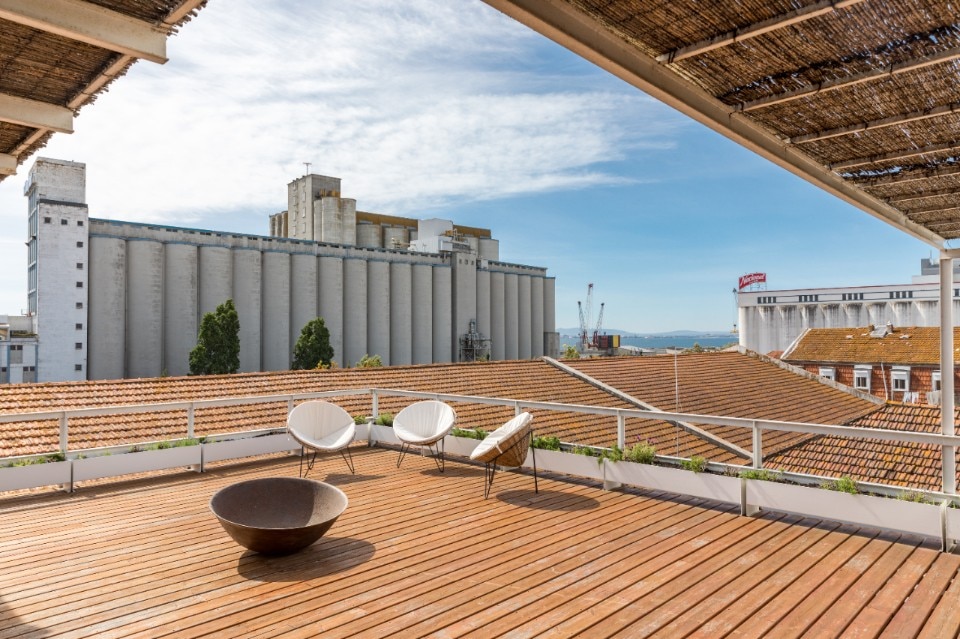This article was originally published on Domus 1060, september 2021.
“In the early 1990s, when I started travelling, getting better known internationally, I often received invitations to move to Berlin, London, New York. I always turned them down, preferring to stay in Lisbon, where I was born and raised. The most important thing is not moving somewhere else, but being able to travel. It’s the path, the journey, that counts for an artist. Curiosity, the nomadic vocation. And you should never forget that the best part of the journey is coming back. It’s only then that you can measure what you’ve achieved.”
Pedro Cabrita Reis welcomes me to his house in the Marvila district on the eastern outskirts of Lisbon. In the 1940s and 1950s it flourished with factories and industry, then declined in the 1980s, but has had a happy rebirth.
“In 2006 there was only one warehouse here. On its ground floor I laid out the gallery where I display my works, on the first floor my atelier (I never use the word ‘studio’), on the second, my home. I’m very close to the river, and once across the bridge I’m already outside Lisbon if I want to go to my retreat in the country.” In his library (“scriptorium is my favoured term”),
Cabrita hands me a glass of white wine and a cigar: “I only smoke Cubans, Partagas, Montecristos or H. Upmanns. They’re classic, simple, strong cigars. But I never smoke Cohibas.”
My eye falls on his CD collection: “I’m a fan of jazz. Not rock. There were times when I only listened to Coltrane, Ornette Coleman, Miles Davis, Archie Shepp. Now I favour classical music and opera. And I also confess to a passion for Roberto Murolo. But I never play music when I’m working.”
I ask Cabrita whether he’s a compulsive reader of Saramago. “No, his sentimental, dreamlike, almost South American vein is not my style. I much prefer António Lobo Antunes, very strong, violent, mental. At present I’m enjoying Delacroix’s diaries and I always go back to poetry.”
Cabrita’s living room contains an array of ceramic creatures: two cocks, a snake, a boar’s head, a stork, a lizard, a turtle. “They’re by a 19th-century artist called Rafael Bordalo Pinheiro.”
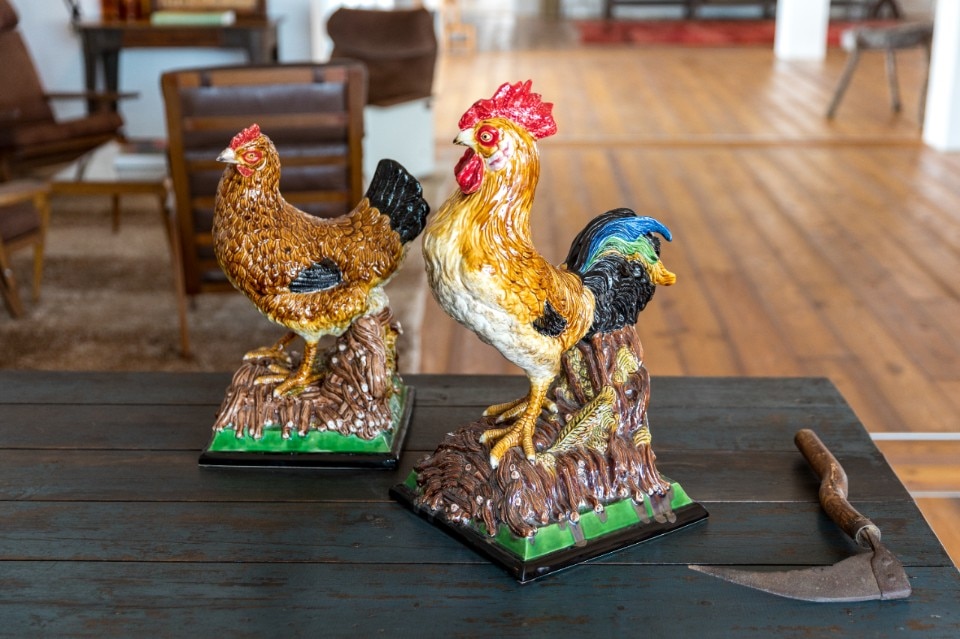
His passion for design appears in a chair by Joe Colombo and Charles Eames, an armchair by Dieter Rams and Hans Wegner (“I love it: simple, industrial”). Under an old sampler for nails, a book about the architecture of trees stands out on a metal table. “It’s a drawn inventory of all existing trees, made by two Italian architects.”
I notice a chess set. “It’s my father’s, the one I played with as a kid. He was a silent man, of few words. Chess was our way of talking.” I’m curious about an old book open on a bedside table: “What you see is a picture of Henry VIII. The book dates from the 1930s, it’s a kind of World History of Art, which I cherish. In the closed Portugal of Salazar it was difficult to gain access to art. It’s no coincidence that my first experiments as a painter at the age of twelve, thirteen, were imitations of Dalí and Van Gogh, because it was easy for the public to see their work. But from an early age I felt the urge to become an artist.
Many artists have discovered their vocation late, after being engineers, lawyers, doctors, firemen, policemen.
That wasn’t true of me.” Cabrita laughs heartily, strong in his convictions.
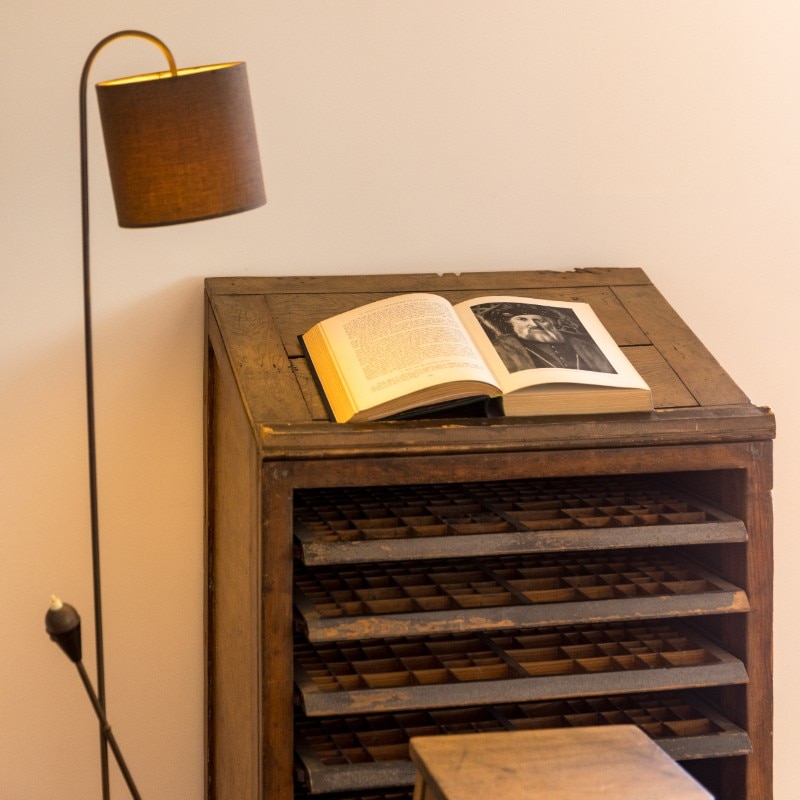
“We haven’t talked about cinema. A masterpiece that has always enlightened me is Tarkovsky’s Andrei Rublev. The film follows the path of an icon painter working for a church. The story echoes the myths about Giotto. Rublev travels, gets drunk, gets into a brawl, makes love with a woman he meets, is scared, weeps in solitude and eats. We see him doing everything except painting. Because, as I said at the beginning of our conversation, it’s the path, the journey, that shapes the inner dimension from which his painting matures.”
In a statement some time ago, Cabrita claimed to go to museums only for Tintoretto and Velázquez and to be increasingly uninterested in contemporary art. “To my mind there are no hierarchies. Is Picasso better than Caravaggio because he lived a few centuries later? No, they’re all extraordinary artists regardless of the period they lived in.
The same goes for Cimabue, Raphael, Barceló, Pistoletto. I see myself as a classical artist, I’m contemporary only in the sense that I’m still alive.”
I probe Cabrita about the saudade that some see as permeating his works. “Nothing could be less true. I never feel nostalgia as a sense of loss. If anything, memory counts for me as the search for knowledge.
”It’s time to say goodbye to Cabrita. As I take my leave, I think back to a passage from his Diaries, unpublished: “The feeling of arrival is beautiful. “The feeling of departure is beautiful. “Lisbon is still wonderful.”
The most important thing is not moving somewhere else, but being able to travel. It’s the path, the journey, that counts for an artist. Curiosity, the nomadic vocation. And you should never forget that the best part of the journey is coming back. It’s only then that you can measure what you’ve achieved.
- Opening image :
- Pedro Cabrita Reis in his library.


